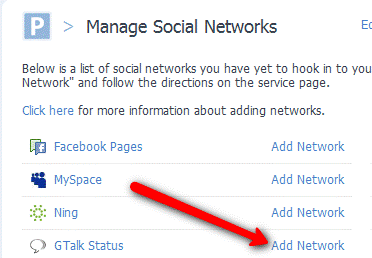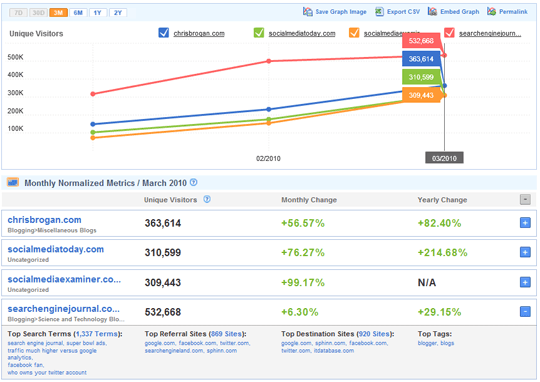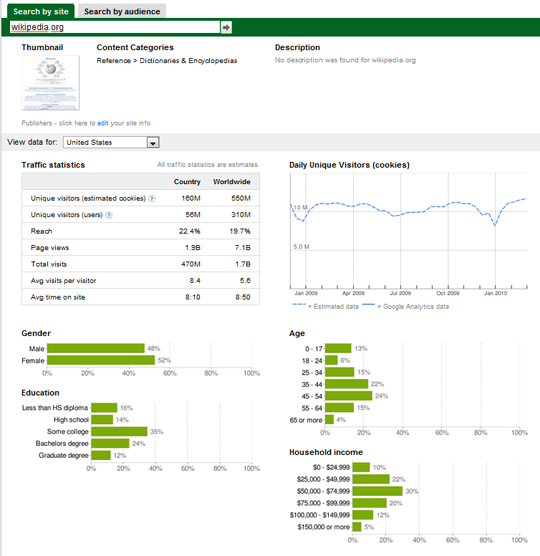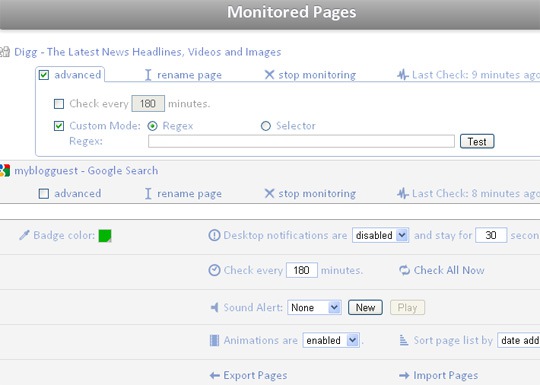ultimos virus billetes baratos gran canaria ñoo camino del cid fernando alonso rafa nadal
"Search Engine Journal" - 4 new articles
- Google Adwords Overhaul!
- Social Media Time Saving Tip
- 5 Types of Link Building
- Track Any Page Changes in Google Chrome
- More Recent Articles
- Search Search Engine Journal
Google Adwords Overhaul!
If any of you were looking at Google Adwords the past few days, you may have noticed a few interesting things. Google has decided to add some new features into the mix. Because relationships with advertising agencies are changing, they find it only fair that they shift and change with it. in regards to the GAP Program:
- The GAP (Google Adwords professional) program will now be replaced with a Google Adwords certification program- with more extensive, up to date and comprehensive strategy focused training. The certification exam will now consist of more practical applications rather than just a memorized test like one you would do in college just to get it over with. You actually have to know your stuff.
- Advanced level exams for the certification, which will highlight your competency for things like reporting, search, analysis and display.
- There is a redesigned 'Certified Partner' badge!! Everyone loves a redesign.
One big thing I noticed, visually, was the "category" section in the keyword selection tool area. There's tons to select from.
Aside from this, Adwords API pricing has been introduced. This means that Google Adwords certified partners, who manage client Adwords accounts, will be able to use the Adwords API free, depending on their managed client spend. If you're interested in applying, please make sure that you have an active agency profile and that you are complying with the Adwords API terms and conditions.
Thanks Google! :)
Check out the SEO Tools guide at Search Engine Journal.
Google Adwords Overhaul!
Social Media Time Saving Tip
What I am going to share with you is not new, but I am surprised at how many people do not use this time saving source. Ping.fm is a resource that I want everyone to know about. If you aren't using it then you need to rethink the reason why. If you are using this wonderful tool then maybe I can share with you some more helpful tips to help in your successes.
In there own words:
"Ping.fm is a simple and FREE service that makes updating your social networks a snap!"
To me the best part is that the service is free and you can post from anywhere with their mobile, instant messenger and email apps. They also work along with hundreds of other 3rd party apps to make updating your status simple and fast. Ping.fm was recently acquired by Seesmic making the service much more powerful. You can send an update and it can be submitted instantly to 50+ social networks including Twitter, Facebook, MySpace, LinkedIn, Ning, WordPress, TypePad, Yammer, Status.net and many more.
My favorite part about using this valuable resource is that I can post from my iPhone from anywhere sharing with my friends and family something cool. For example, I recently sent an update to all my friends to over 20 of my social networks right from my phone. The update was sent from the beautiful mountains of Utah stating that I had just finished a Half Marathon.
Here is a very short video I created showing how easy it is to sign up and start using Ping.fm today:
There is also a trick to update your Google Buzz account via Ping.fm and here are the steps:
1. Of course you must have a Ping.fm account, sign up here – http://ping.fm/
2. Add Gtalk by clicking "Add Network" at the http://ping.fm/networks/ page
3. Next enter your email address and password associated with your Google buzz account then click submit:
4. And for the last step, you need to add Gtalk as a connected service by logging into your Google Buzz account. See images below for steps:
That is it, your Ping.fm posts will now automatically post to your Google Buzz account. Most other social networks are much easier to add as you can see in the video I shared above.
There are some things you need to know with using Ping.fm as a social media tool. You need to remember that it is simply a tool that will help save you time. It is not an automated tool that will make you millions or get you more followers necessarily. I see many people abuse the tool to the point that they are not being social anymore with their friends and followers. As we know, Social Media is all about the conversation and being social. If all you are doing is submitting updates and not a part of the discussion then you will loose out on what social media really is.
Here are some helpful tips and reminders to save time but still be social:
- Only use Ping.fm as a status update service and not your only means of connecting to your social networks
- Post your status updates and make sure you still login to your social network profiles to be a part of the dialogue
- Don't overdue it with your submissions, you will loose a lot of friends and followers this way
- Use other tools to help you in the conversation (e.g. Seesmic, Hootsuite, or Tweetdeck)
In conclusion, Ping.fm is simply a tool for us as marketers and individuals to use to help us save time when conversing and sharing stuff with our friends and followers. This free resource has the ability to help us be more productive if we use it correctly and wisely. Bear in mind that any tool can be abused, so just be careful. Also always remember to have fun.
Check out the SEO Tools guide at Search Engine Journal.
Social Media Time Saving Tip

5 Types of Link Building
There are many reasons to build links to your website, and sometimes, it is hard to determine if one link is better than another, or if it is worth anything at all. For example, a dofollow link is better than a nofollow for some purposes, but not for others. And a redirected link may hold no value for SEO, but may still prove valuable. Here are the types of links that you can build to your website, and why you should take advantage of a mixture of each.
Traffic Generating Links
Traffic generating links are links that do not necessarily help in terms of raising your rankings for a particular keyword or building up your PageRank. What these links do is expose your website on higher traffic pages in hopes that the traffic from the site you are linked on will get you referral visits. Traffic generating links can be in the form of text links, banner ads, forum posts, blog comments, social mentions, popular directories, and more.
Two free tools to determine the traffic a site gets and what demographics visit the site which will help you decide whether it would be a valuable traffic generating link are Compete and Google AdPlanner.
Compete will allow you to compare up to fives sites (when you register for a free account) and see their estimated traffic, percentage of change (to see if a site is becoming more or less popular), top keywords leading to the site, top keywords used on the site, and top referral sites. This is great information to use if you are looking to build traffic links via banner ads, blog commenting, and guest blogging.
Google AdPlanner shares traffic statistics (unique visitors, page views, average time on site), demographics information (gender, education level, income level, age), and related information (audience interest, related sites visited, and keywords searched for) about individual sites. You can also search for sites based on audience by specifying the geography, language, demographic, and interest level to find sites that are visited by people who would be most likely to click on your link. Google AdPlanner will also let you know if a website accepts advertising and links to the advertising page for that website.
Traffic generating links can be a mixture of free and paid links, dofollow and nofollow links. The key in finding traffic generating links is finding sites that get a good amount of visitors that are interested in what your website has to offer.
SERP Elevating Links
To boost your search result positioning for particular keywords, the key is getting dofollow links on relevant pages using your keyword phrase as anchor text. So if you want to rank highly for blogging tips, you will want your links to be using those keywords.
There are many ways to get good SERP elevating links including blog commenting on relevant dofollow blogs (preferably with the KeywordLuv plugin), guest blog posting with your anchor text link in your author bio or content, forum signatures, article marketing, directory submissions, and organic links from relevant pages.
PageRank Boosting Links
While the debate ensues about how important PageRank is for your site and whether Google will continue updaing rankings, until the day comes when Google removes PageRank from their toolbar, people are going to care about their ranking in the 1 – 10 system.
PageRank is built by getting dofollow links from relevant pages with high PageRank. The higher the PR of the page your link is on, the more it will count towards boosting your PageRank. This Google PageRank calculation chart shows how many estimated links it takes to get your site to move up in PageRank.
So what tool will help you find some pages with high PageRank? Why not try SEO Quake for Firefox? It has a handy feature that will let you sort your search results for a particular word by PageRank.
Once you find relevant pages with high PageRank, you can start building PageRank boosting links to your site via blog comments, link requests, directory submissions, etc.
Reputation Building Links
Are you looking toward using SEO for reputation management? Then you will want to focus on reputation building links – links that are anchored with your name or company name as the anchor. The links are built not just to your main website, but also to your social profiles, blogs, and other affiliations, as the point is to bring positive information about you up in the search results.
Reputation links can be built in a multitude of ways. It goes beyond just creating social profiles – you have to build links to those social profiles. Ways to do this include adding it to your main website, interlinking one social profile with another, blog commeting using your name as anchor text and social profiles as the website URL, adding your social profiles to relevant directories (like Twellow, the Twitter directory), including your profiles in forum signatures, and so on.
Backlinks for Your Backlinks
Each of your backlinks to your websites or social profiles is strengthened by the incoming links to the page your link is placed upon. Therefore, it only makes sense to create some backlinks for the pages you get links.
One easy way to do this is to socially bookmark pages once you get a link placed upon them – this can also be an effective method of keeping track of the links you are getting if you are not using another system to manage your backlinks. Bookmarking the pages your link gets placed on may also help notifiy search crawlers to come and check out the newly updated page, getting your link noticed and cached quickly.
The Key to Building Links
One of the most important things to keep in mind when building links, for any purposes, is that the process must look natural to Google to avoid being penalized. So be sure to vary your strategies, anchor text, and other methods of link building so that you can get the optimum results without running into any problems.
Your Link Building
Do you vary your link building for different purposes, or aim simply to raise your SERP? Are there other ways you build links that are effective for the specific purposes mentioned above. Please share your tips in the comments.
Check out the SEO Tools guide at Search Engine Journal.
5 Types of Link Building
Track Any Page Changes in Google Chrome
We are pretty good at tracking page changes at FireFox already. I did a detailed overview of all the addons that track any page for changes and notify you in various ways. I also mentioned that those tools are awesome for various purposes:
- You can track Google SERPs (especially the newest results that change daily) and thus easily see your brand name mentions;
- You can track social media sites like Digg or Sphinn to get timely notified about new hot stories on any category page (or new search results);
- You can use page trackers instead of an RSS reader to monitor new front page stories,
- You name it!
So while we can do that in FireFox, some (many?) of us may have switched to Google Chrome. So the good news is that they can do the same thing there as well!
Page Monitor is a fun Google Chrome extension that allows your browser to monitor changes to web pages.
The great features of the extension include:
- The ability to monitor any number of pages for changes.
- One-click adding of pages.
- Smart comparison system that ignores ads and code changes.
- Highlighting of changes that happened to a page since the last check.
- The ability to set separate check interval for each page.
Get it installed in seconds and notice a tiny icon in the toolbar (next to the page address). The icon is used to add new pages to monitor as well as to notify you of the number of updated pages:
So when on any page you want to monitor, click that icon and easily start tracking the page changes:
Now whenever this page changes, the monitor icon will display a notification on its badge. Of course, you can repeat this for any number of pages.
If you want to see the actual changes on the page, click "View changes" (see the screenshot above) and you will be able to see what has been added (green color) and what has been removed (red color):
The tool offers to customize some settings as well. To access options, right-click on the icon and select "Options".
From there you can:
- Stop monitoring any page or rename any page record;
- See how long ago the tool checked the page;
- Set the checking interval;
- Set tracking changes to particular elements on the page (e.g. a price tag on a shopping site) by specifying a CSS/jQuery selector or regular expression to match against the page's source code (the result of applying this selector/expression is compared). Of course, this feature requires that you know how to use selectors or regular expressions.
- Set some general look and feel (highlight color, sound alerts, sorting, etc);
- Import and export the list of pages to monitor:
Check out the SEO Tools guide at Search Engine Journal.
Track Any Page Changes in Google Chrome
More Recent Articles

Click here to safely unsubscribe now from "Search Engine Journal" or change your subscription or subscribe
Unsubscribe from all current and future newsletters powered by FeedBlitz
Your requested content delivery powered by FeedBlitz, LLC, 9 Thoreau Way, Sudbury, MA 01776, USA. +1.978.776.9498
martes, 27 de abril de 2010
4 new articles
Suscribirse a:
Enviar comentarios (Atom)
Seguidores
Archivo del blog
-
▼
2010
(127)
- ► septiembre (7)
-
▼
abril
(26)
- 5 new articles
- 8 new articles
- 4 new articles
- <!-- AOL_MESSAGE --><!-- Your FeedBlitz Updates ...
- <!-- AOL_MESSAGE --><!-- Your FeedBlitz Updates ...
- <!-- AOL_MESSAGE --><!-- Your FeedBlitz Updates ...
- <!-- AOL_MESSAGE --><!-- Your FeedBlitz Updates ...
- <!-- AOL_MESSAGE --><!-- Your FeedBlitz Updates ...
- <!-- AOL_MESSAGE --><!-- Your FeedBlitz Updates ...
- NSFW: Facebook, YouTube Are the Most Visited Sites...
- <!-- AOL_MESSAGE --><!-- Your FeedBlitz Updates ...
- <!-- AOL_MESSAGE --><!-- Your FeedBlitz Updates ...
- <!-- AOL_MESSAGE --><!-- Your FeedBlitz Updates ...
- <!-- AOL_MESSAGE --><!-- Your FeedBlitz Updates ...
- Stone Temple Consulting (STC) Articles and Intervi...
- <!-- AOL_MESSAGE --><!-- Your FeedBlitz Updates ...
- <!-- AOL_MESSAGE --><!-- Your FeedBlitz Updates ...
- <!-- AOL_MESSAGE --><!-- Your FeedBlitz Updates ...
- <!-- AOL_MESSAGE --><!-- Your FeedBlitz Updates ...
- <!-- AOL_MESSAGE --><!-- Your FeedBlitz Updates ...
- <!-- AOL_MESSAGE --><!-- Your FeedBlitz Updates ...
- <!-- AOL_MESSAGE --><!-- Your FeedBlitz Updates ...
- <!-- AOL_MESSAGE --><!-- Your FeedBlitz Updates ...
- <!-- AOL_MESSAGE --><!-- Your FeedBlitz Updates ...
- <!-- AOL_MESSAGE --><!-- Your FeedBlitz Updates ...
- <!-- AOL_MESSAGE --><!-- Your FeedBlitz Updates ...















No hay comentarios:
Publicar un comentario